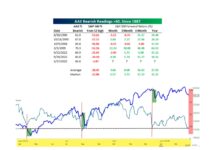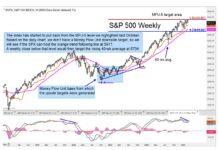It is fair to say we are very focused on investment fees and expenses. At times, this probably comes across as an irrational obsession to everyday investors using (or in need) of an advisor.
As many like to explain it, if you are shopping for a new car, computer, or vacuum cleaner, it is common sense that spending more money will generally get you a product with higher quality and better performance.
Unfortunately, this does not hold when it comes to investment products.
Perversely, the opposite is true: the more you pay for an investment product such as a mutual fund, exchange traded fund, or that maddeningly confusing “variable deferred annuity,” the higher the odds the product will underperform and do so consistently and over most time frames.
The disclosure of fund fees is “inconsistent” to put it mildly. Most investment advisors and financial planners are required to disclose their investment fees, and do so in a prominent way via invoices they send to their clients.
However, there is no such disclosure requirement when it comes to fund fees or various revenue sharing agreements that many brokers/advisers enjoy. We have yet to see a brokerage statement that properly discloses all the fees and expenses of the funds a client is invested in. To find them we have to dig through the less-than-user-friendly prospectuses and other agreements.
It is therefore no surprise that many passive investors have no idea that that “highly recommended” mutual fund in their IRA costs 1.53% each year or, worse, that they are also paying an upfront “load” of 3%, 4%, or even 5.75% each time they buy more shares.
The average retail investor pays between 1.20% and 1.40% in various investment fees annually and we have seen more than a few instances where these fees were even higher. In an era when many high-quality funds have expenses that round to 0.10% it is fair to say this is excessive and results in a significant drain of savings over time.
 Disclosures aside, the other problem is that most people have a hard time cognitively processing investment fees expressed in percentages. Therefore, we often hear something to the extent of: “C’mon now, it’s just a percent.”
Disclosures aside, the other problem is that most people have a hard time cognitively processing investment fees expressed in percentages. Therefore, we often hear something to the extent of: “C’mon now, it’s just a percent.”
To which we answer: “Sure, but that percent-point-two-eight means you are paying about $4,500 in needless fees you are not even aware of every year;” and then pause to let the logic of numbers sink in.
The reason we are bringing this topic to your attention is because Morningstar came out with a great article on this topic a few days ago.
Their research has led them to this powerful conclusion:
“The expense ratio is the most proven predictor of future fund returns.”
In other words, the less you pay for an investment product today, the higher the odds you will end up with more money in your pockets in the future.
Something to think about the next time you open your brokerage statement.
Thanks for reading.
Twitter: @KastelCapital
Any opinions expressed herein are solely those of the author, and do not in any way represent the views or opinions of any other person or entity.








